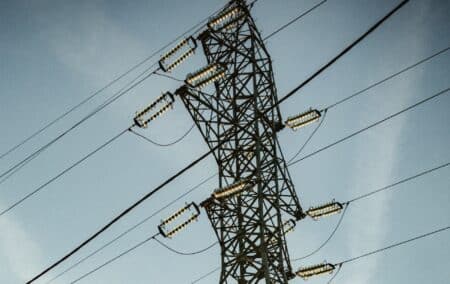South Africa’s electricity supply is threatened on two fronts, by malign nonsense and by innocent nonsense.
The malign threat is the ANC, which has wrecked Eskom with corruption, incompetence and ideology, and which is trying to prevent private companies from generating electricity for themselves or others.
The innocent threat is the foolish belief that renewable energy can solve our energy problems.
An example of the former is energy minister Gwede Mantashe’s curtailing independent generators. An example of the latter is an idiotic statement by John Steenhuisen of the Democratic Alliance (DA) that solar, wind and batteries are cheaper than powerships and can be installed more quickly.
The innocent nonsense is probably more dangerous, since wind and solar are inherently useless for grid electricity however honest and competent the operator. They are hopelessly unreliable, require gigantic machines, use colossal resources, have a damaging environmental footprint, and result in staggeringly expensive final electricity (electricity for the consumer). Our renewable power programme, REIPPPP, has proved a ruinously expensive failure.
The best policy for electricity supply is straightforward. Anyone who wants to, including the state, should be allowed to generate and sell electricity provided they meet electricity regulations (for safe electricity with correct phase, frequency and voltage) and operate in a free market.
I support capitalism, and recognise that private enterprise can nearly always provide better goods and services than the state. But there are exceptions, and electricity is one.
Owning and running a power station requires little skill or invention but a lot of capital, and the state can always raise capital more cheaply than the private sector.
Furthermore, a state power company only wants to cover costs, and is content with a long payback period. For these reasons, a private power company can never compete against a well-run state power company, which Eskom used to be, except in niche markets. But it should be allowed to try.
Mantashe is opposed to private generators because the ANC hates private enterprise, worships the state, and wants complete control over everything in South Africa. Controlling electricity also gives the ANC rich scope for looting.
Provided when needed
Recently South Africa went out on tender for the supply of 2,000 MW of emergency power. The power had to be ‘dispatchable’: it had to be provided when needed. Solar and wind cannot do this. They cannot guarantee electricity next Wednesday at seven o’clock in the evening.
For some inexplicable reason, the supply had to be for 20 years. The big winners, providing 1,220 MW, were three Turkish ‘powerships’ (floating power stations using natural gas). There was outrage over this, with accusations of corruption, probably well-founded. I found the minor winners, using only solar and batteries, more disturbing.
On the numbers provided, they cannot possibly provide the contracted dispatchable power. I can only suppose the usual sweetheart deals for renewables, and low penalties for failure to supply.
Responding to the controversy, on 29 April, DA leader John Steenhuisen (otherwise a good man), spoke the following nonsense: ‘Energy experts say solar and wind power, in combination with battery storage could provide the same amount of power that Mantashe’s powership deal can provide, and with the same lead time.’
Oh, dear! The three powerships have a capacity of 1,220 MW. At R1,536/MWh and 90% load factor, they would generate about 192 TWh over 20 years, costing just under R300 billion. To match this with wind, solar and batteries, you would require at least 227 of the world’s biggest batteries with a storage capacity of 129 MW each (like the one supplied to South Australia in 2018 by Elon Musk), costing in total about R180 billion.
They would have to be replaced at least once over the 20 years, bringing the battery costs alone to R360 billion. Given the low load factors of wind and solar, the need for them to charge batteries and provide electricity, and the cycle inefficiency of the batteries, you would need about 4,000 MW of wind and solar capacity.
Far higher
This is about the same as the total installed under REIPPPP since 2013. The costs of this capacity, and the batteries, added to the costs of extra transmission and distribution, and operations and maintenance, would be far higher than those of the powerships. (All my calculations and sources are available to anyone who wants them. A learned colleague checked them and said my cost estimates for Steenhuisen’s suggestion were far too low.)
The required lead time for the emergency power, which the powerships will meet, was 18 months. Is Steenhuisen saying he can install 227 of the world’s biggest batteries, 4,000 MW of wind and solar, and all the required transmission and distribution, in 18 months, when it took seven years for REIPPPP to do the same with no batteries?
South Africa’s electricity supply is now a disaster. It will take ten years or more to repair it to supply a healthy economy.
Powerships, for all their problems, can provide some emergency supply. But to secure a reliable and economic electricity supply, as we had in the past, what is most needed is good sense – rather than wishful thinking (innocent nonsense) and bad intent (malign nonsense).
[Image: Bianca Ackermann on Unsplash]
The views of the writer are not necessarily the views of the Daily Friend or the IRR
If you like what you have just read, support the Daily Friend

